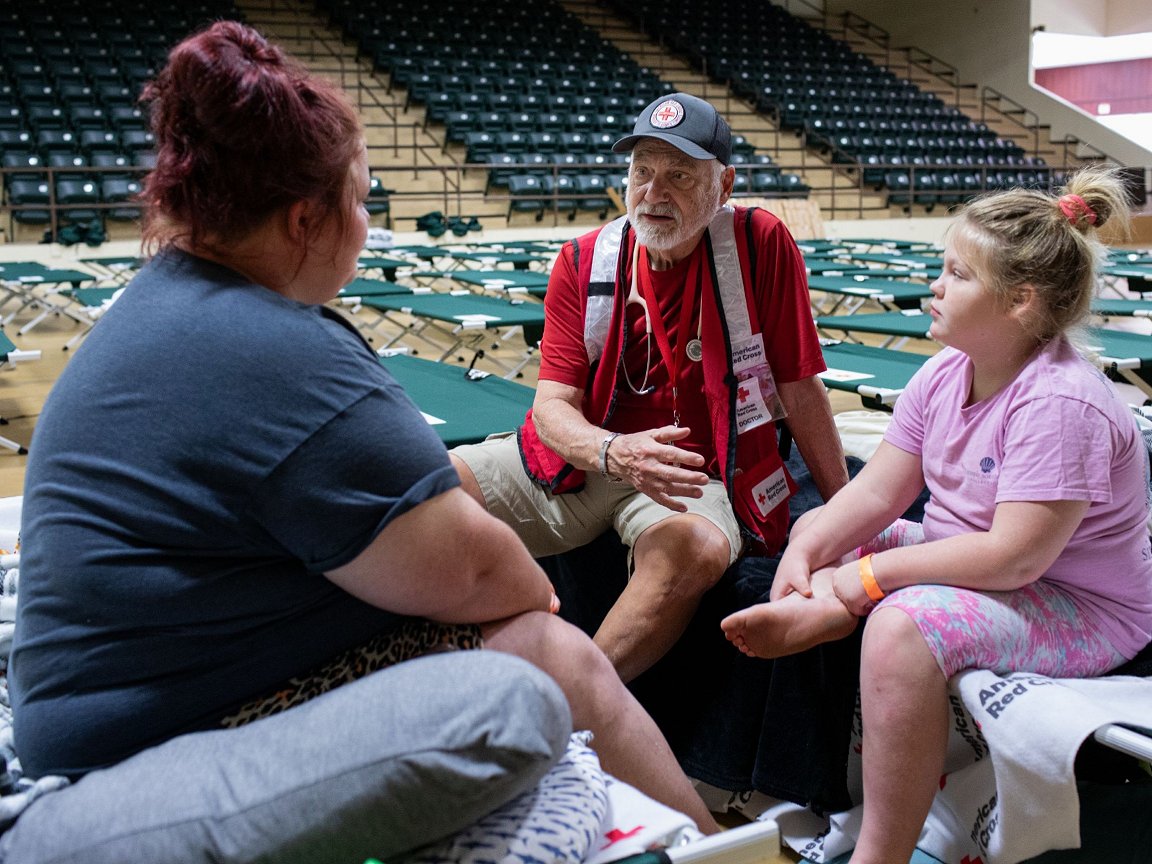
‘One of the deadliest storms ever to hit the US’

By the Climate Centre
The American Red Cross says it has now deployed more than 1,300 personnel on the ground “in multiple states providing shelter, comfort, and relief” after Hurricane Helene’s lethal rampage through the US south-east.
“The scale of devastation is beyond words. It’s one of the deadliest storms to ever hit the US, leaving hundreds of miles of destruction and countless lives changed forever,” the National Society said on X/Twitter Thursday.
It added: “More than 200 Red Cross reunification team members are working through nearly 4,000 requests to help people reconnect with loved ones, despite major connectivity challenges.
“In the Carolinas, Georgia, Tennessee and Florida, we’re managing shelters, where residents can get hot meals and emotional support.”
‘The strength, reach, and devastation of Hurricane Helene is historic’
Red Cross emergency response vehicles from all over the US were delivering meals and vital supplies, and the Red Cross was working with state authorities in the Carolinas to coordinate efforts to get food to residents.
“The strength, reach, and devastation of Hurricane Helene is historic. The rescue and response efforts will be too,” US Secretary of Homeland Security Alejandro Mayorkas said last week.
Helene was the eighth named storm of the 2024 Atlantic hurricane season; it gathered strength over the warm Gulf of Mexico before crashing onto the Gulf Coast of Florida on Thursday night 26 September – four days after the National Hurricane Center warned people in Cuba, Mexico’s Yucatan Peninsula and the west Florida coast of the potential danger.
Scores of people are reported to have died and hundreds are still unaccounted for more than a week later.
Entire communities were destroyed by fast-moving waters and the landslides they triggered – also last week described as “historic and catastrophic” by the National Hurricane Center – in the mountainous Appalachian region particularly.
Tens of thousands of homes have been destroyed, leaving people in need of shelter, water, food and health care, the American Red Cross said.
Before Helene’s landfall, the National Society’s teams prepared dozens of shelters and moved truckloads of relief supplies in Florida and Georgia, in the expectation that the storm would “one of the fastest intensifying hurricanes on record to impact the Florida Panhandle, bringing up to 120mph winds, a 15-foot [4.6m] storm surge, and severe inlet flash flooding.”
The Red Cross advised residents in Helene’s path to “heed evacuation orders and plan how you will stay safe [including] gathering emergency supplies, staying informed with local alerts, and preparing for power outages.”
‘Science, imagination, action’
The Office of Water Prediction of the US National Oceanic and Atmospheric Administration said last Thursday that estimated rainfall from Helene across the southern Appalachians would recur only once in a thousand years – meaning there was less than a 0.1 per cent chance of such a storm in any given year.
The odds on such an exceptional event are now likely to have shortened.
The Climate Centre’s Dorothy Heinrich said Friday: “With climate change, we will be seeing more and more tropical cyclones that will be unprecedented in their intensity, track, duration, timing, and more.
“It is critical that we strengthen our preparedness and response systems for all plausible scenarios. Past experience is a strong driver of risk perception and disaster preparedness. To prepare for unprecedented storms like Helene, we need science, imagination and action.”
Seven years ago, World Weather Attribution scientists said climate change made the record rainfall that fell on Houston, Texas during Hurricane Harvey roughly three times more likely and 15 per cent more intense.
In a special report last week (The science behind how a Florida hurricane ravaged North Carolina), the US NBC network said the devastation seen in North Carolina’s inland mountain towns, far from any coastline, “may seem unexpected for an area once thought of as a safe haven from the effects of climate change, but [experts say] it’s the type of far-reaching impact that will become increasingly likely.”
NBC quoted a Climate Central report from May this year that found precipitation changes linked to climate change accounted for nearly 40 per cent of inland flood damage in the US since 1988.
“Communities along the Gulf and Atlantic coasts, as well as inland in Appalachia and northern New England carry an outsized burden of current and future flooding,” the report said.
Amber and her family at a Red Cross shelter after Hurricane Helene devastated their home – now the “stark reality for hundreds of people across the south-east,” the American Red Cross said last week. The family have survived three hurricanes in the past 15 months. With partners, the Red Cross has provided nearly 18,000 overnight shelter stays for Helene evacuees, a number likely to grow as people return to their neighbourhoods only to find their homes uninhabitable. (Photo: American Red Cross)